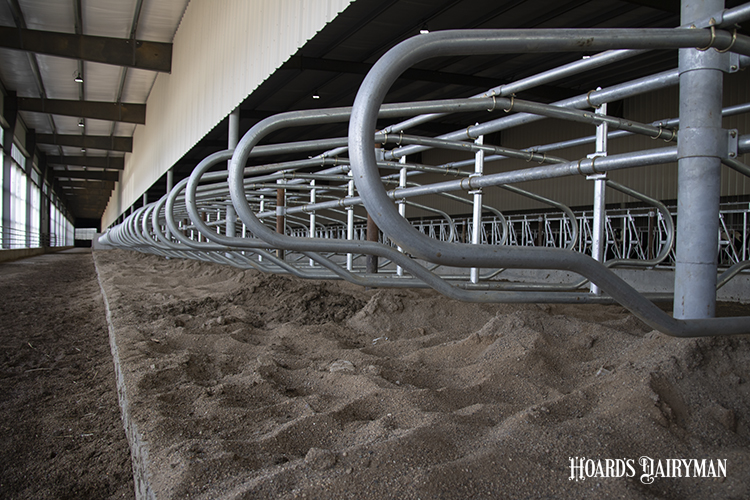
Though just tiny pieces of real estate, a cow’s four teat ends are the gateway for various kinds of pathogens from the environment to enter the udder and cause mastitis. Preventing infection means keeping those teat ends and the area around them as clean as possible, and the surface they come into contact with more than any other throughout the day is the stall bedding.
A clean resting area can go a long way toward reducing mastitis, discussed Ernest Hovingh during a Penn State webinar. However, he said that he has heard farmers say they have great milkers, so can’t they just rely on those parlor employees to remove bacteria from teats and not worry so much about the stalls?
The research professor and veterinary extension team leader noted that even when milkers are doing well, providing cleaner teats to start with means an even better job will be done. “The cleaner the teats are when you start, the better off you are even if you’re doing a really good job,” Hovingh emphasized.
Stall design and condition, as well as bedding, determine how well teats stay free of bacteria. To direct manure into the alleyway instead of the stall, Hovingh said that stalls should be sized so that cows can stand with their back straight and neck barely touching the neck rail when all four feet are on the stall surface. If you see excessive manure in the stalls, he said they may not be bedded enough, which leads to the curb being too high and cows laying further forward.
In terms of bedding material, sand is the gold standard because it doesn’t support bacterial growth and provides excellent cushioning. Sawdust or shavings, recycled sand, and manure solids can all also be good options, Hovingh said, explaining that cows prefer 4 to 8 inches of bedding on the stall surface, even on a mattress. In that case, having bedding present provides more absorption than solely the mattress surface, so there is less risk of infectious exposure to other teats or other cows. “Multiple studies have shown that when we have mattress-only herds, we have dirtier udders,” the veterinarian shared.
He also described research showing that even without a contaminating agent, heat and moisture in bedding raises bacteria counts, which leads to higher teat end bacteria counts. This means thorough stall grooming, especially of wet spots, and frequent re-bedding, especially in humid climates and with manure solids bedding, are critical.
Hovingh recommended manure solids be dried to 60% to 65% dry matter to avoid excessive moisture. In the case of recycled sand bedding, that dry matter should be more like 95%, he said. Natural or mechanical ventilation is also helpful in keeping air moving over the stalls and drying them out. Try to store any bedding material under cover to avoid rain moisture, he added.
The cow component
Of course, milking procedure, genetic indicators, and other elements also contribute to mastitis prevalence. Hovingh shared two conformation factors that have been correlated with higher somatic cell counts (SCC).
The first was udder size and shape, and it makes sense cows with deeper udders are more susceptible to infections. Hovingh added that research found cows with looser fore udder attachments were twice as likely to come down with mastitis. Also, cows with flat teat ends were more likely to develop mastitis or a high SCC. This is probably correlated with a weaker sphincter muscle, Hovingh said.








